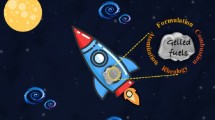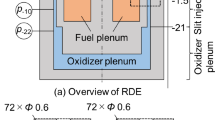Abstract
One of the proposed concepts for spark ignition engines is advanced port fuel injection (APFI), which suggests using two port injectors for each cylinder. In this research, we numerically examine the capabilities of this concept in reducing fuel consumption and increasing engine performance. The results demonstrated that the use of this concept is very effective due to the use of two injectors and the possibility of reducing the spraying time and bringing the injection start time closer to the air inlet valve opening time. The maximum amount of fuel film formed on the walls is reduced by about 75%, naturally, which leads to better and more homogeneous fuel distribution inside the combustion chamber and increases combustion efficiency. The results showed that under the same boundary conditions and engine operating point, the use of two port injectors for each cylinder leads to an increase of more than 20% of the maximum combustion chamber pressure and about 4% combustion efficiency. On the other hand, fuel film formation becomes worse in cold conditions. So in this study, the capabilities of this concept in cold conditions were investigated too. Investigations have shown that the advanced port fuel injection, unlike conventional engines, is almost insensitive to inlet temperature changes.
摘要
关于火花点火发动机的建议概念之一是先进的进气道燃油喷射(APFI),建议每个气缸使用两个进气道喷射器。在这项研究中,通过数字检查来评估此概念在减少燃油消耗和提高发动机性能方面的能力。结果表明,使用两个喷射器,可以缩短喷射时间,并使喷射开始时间更接近进气阀打开时间,说明使用此概念是非常有效的。在壁上形成燃料膜的最大质量可减少75%,这导致燃料在燃烧室内更好,更均匀地分布,从而提高了燃烧效率。在相同的边界条件和发动机工作点,每个气缸使用两个进气道喷射器可导致燃烧室压力提高20%,燃烧效率提高4%。但在寒冷条件下燃料膜的形成变得更糟,在本文中,也研究了这种概念在寒冷条件下的能力。研究结果表明,与传统发动机不同,先进的进气道燃油喷射对进气温度变化几乎不敏感。
Similar content being viewed by others
Abbreviations
- AMR:
-
Adaptive mesh refinement
- APFI:
-
Advance port fuel injection
- ATDC:
-
After top dead center
- BDC:
-
Bottom dead center
- BTDC:
-
Before top dead center
- CA:
-
Crank angle
- CFD:
-
Computational fluid dynamics
- c p :
-
Specific heat capacity
- p :
-
Pressure
- PFI:
-
Port fuel injection
- Pr t :
-
Prandtl number
- S :
-
Source term in mass transport equation
- T :
-
Temperature
- TDC:
-
Top dead center
- u :
-
Velocity
- Y m :
-
Mass fraction of species m
- δ ij :
-
Kronecker delta
- D :
-
Diffusion coefficient
- E :
-
Specific internal energy
- GDI:
-
Gasoline direct injections
- H m :
-
Species enthalpy
- k :
-
Turbulent kinetic energy
- K t :
-
Turbulent conductivity
- ε :
-
Turbulent dissipation
- μ :
-
Viscosity
- μ t :
-
Turbulent viscosity
- ρ :
-
Density
- σ ij :
-
Stress tensor
References
WATSON A, BATES R, KENNEDY D. Air pollution, the automobile, and public health [M]. Washington, D. C.: National Academies Press, 1988. DOI: https://doi.org/10.17226/1033.
LI Yuan-xu, NING Zhi, YAN Jun-hao, et al. Experimental investigation on combustion and unregulated emission characteristics of butanol-isomer/gasoline blends [J]. Journal of Central South University, 2019, 26(8): 2244–2258. DOI: https://doi.org/10.1007/s11771-019-4170-z.
GAO Jin, LI Fa-she, ZHANG Xiao-hui, et al. Effect of ethanol addition on flame characteristics of waste oil biodiesel [J]. Journal of Central South University, 2018, 25(5): 1043–1051. DOI: https://doi.org/10.1007/s11771-018-3804-x.
STAN C, GUENTHER S, MARTORANO L, et al. Aspects of mixture formation and combustion in GDI engines [C]//SAE Technical Paper Series. 400 Commonwealth Drive, Warrendale, PA, United States: SAE International, 2000. DOI: https://doi.org/10.4271/2000-01-0648.
RAHBARI A. Effect of inlet temperature and equivalence ratio on HCCI engine performance fuelled with ethanol: Numerical investigation [J]. Journal of Central South University, 2016, 23(1): 122–129. DOI: https://doi.org/10.1007/s11771-016-3055-7.
CHEN Hai, LIU Wei-qiang. Numerical study of effect of front cavity on hydrogen/air premixed combustion in a microcombustion chamber [J]. Journal of Central South University, 2019, 26(8): 2259–2271. DOI: https://doi.org/10.1007/s11771-019-4171-y.
ASHLEY S. Attacking GDI engine particulate emissions [J]. SAE Articles, 2014: 13624. https://www.sae.org/news/2014/10/attacking-gdi-engine-particulate-emissions.
DOCQUIER N, CANDEL S. Combustion control and sensors: A review [J]. Progress in Energy and Combustion Science, 2002, 28(2): 107–150. DOI: https://doi.org/10.1016/S0360-1285(01)00009-0.
POSSELT A, MAI A, LEDER M, et al. Advanced PFI: the economical, high-performance systems approach [C]//SAE Technical Paper Series. 400 Commonwealth Drive, Warrendale, PA, United States: SAE International, 2015. DOI: https://doi.org/10.4271/2015-36-0392.
Gasoline port fuel injection (PFI), with advanced PFI even more energy-efficient [OL]. Robert Bosch Website, 2015. https://products.bosch-mobilitysolutions.com/media/en/ubk_europe/db_application/downloads/pdf/antrieb/de_5/pfi_full_de.pdf.
ZHU G S, REITZ R D, XIN J, et al. Modelling characteristics of gasoline wall films in the intake port of port fuel injection engines [J]. International Journal of Engine Research, 2001, 2(4): 231–248. DOI: https://doi.org/10.1243/1468087011545451.
KOEDERITZ K R, EVERS M R, WILKINSON G B, et al. Break-up of liquid fuel films from the surfaces of the intake port and valve in port-fuel-injected engines [J]. International Journal of Engine Research, 2002, 3(1): 37–58. DOI: https://doi.org/10.1243/1468087021545522.
MEROLA S, SEMENTA P, TORNATORE C. Effect of fuel film deposition on combustion process in PFI SI engine [J]. Journal of KONES Powertrain and Technology, 2007, 14(3): 395–402. DOI: https://doi.org/10.1007/s12239-009-0063-8.
CHENG Yong-sheng, DENG Kang-yao, LI Tao. The coupling influence of airflow and temperature on the wall-wetted fuel film distribution [J]. Experimental Thermal and Fluid Science, 2010, 34(2): 227–233. DOI: https://doi.org/10.1016/j.expthermflusci.2009.10.031.
ANAND T N C, RAVIKRISHNA R V. Modelling of mixture preparation in a small engine with port fuel injection [J]. Progress in Computational Fluid Dynamics, an International Journal, 2012, 12(6): 375. DOI: https://doi.org/10.1504/pcfd.2012.049810.
PADALA S, KOOK S, HAWKES E R. Effect of ethanol port-fuel-injector position on dual-fuel combustion in an automotive-size diesel engine [J]. Energy & Fuels, 2014, 28(1): 340–348. DOI: https://doi.org/10.1021/ef401479s.
CHENG Yong-sheng, DENG Kang-yao, LI Tao. Measurement and simulation of wall-wetted fuel film thickness [J]. International Journal of Thermal Sciences, 2010, 49(4): 733–739. DOI: https://doi.org/10.1016/j.ijthermalsci.2009.10.006.
SHIBATA H, MIZOBUCHI T, IWAMURO M, et al. New spray concept development for dual injection system [C]//SAE Technical Paper Series. 400 Commonwealth Drive, Warrendale, PA, United States: SAE International, 2017. DOI: https://doi.org/10.4271/2017-01-0835.
ARAKI M, SAKAIRI K, KURIBARA T, et al. Effects of injection parameters on the amount of wall-wet fuel in a port-fuel-injected spark-ignition engine during cold start [J]. International Journal of Engine Research, 2021, 22(1): 184–198. DOI: https://doi.org/10.1177/1468087419837768.
REID B A, GAVAISES M, MITROGLOU N, et al. On the formation of string cavitation inside fuel injectors [J]. Experiments in Fluids, 2014, 55(1): 1–8. DOI: https://doi.org/10.1007/s00348-013-1662-8.
MANIN J, PICKETT L M, YASUTOMI K. Stereoscopic high-speed microscopy to understand transient internal flow processes in high-pressure nozzles [J]. Experimental Thermal and Fluid Science, 2020, 114: 110027. DOI: https://doi.org/10.1016/j.expthermflusci.2019.110027.
MAMAIKIN D, KNORSCH T, ROGLER P, et al. Experimental investigation of flow field and string cavitation inside a transparent real-size GDI nozzle [J]. Experiments in Fluids, 2020, 61(7): 1–15. DOI: https://doi.org/10.1007/s00348-020-02982-y.
KARATHANASSIS I K, HWANG J, KOUKOUVINIS P, et al. Combined visualisation of cavitation and vortical structures in a real-size optical diesel injector [J]. Experiments in Fluids, 2020, 62(1): 1–18. DOI: https://doi.org/10.1007/s00348-020-03096-1.
LI Yao-ting, HUANG Yong-cheng, YANG Shang-sheng, et al. A comprehensive experimental investigation on the PFI spray impingement: Effect of impingement geometry, cross-flow and wall temperature [J]. Applied Thermal Engineering, 2019, 159: 113848. DOI: https://doi.org/10.1016/j.applthermaleng.2019.113848.
Converge CFD Software. Converge manual-converge CFD 2.3 [M]. 2016. https://convergecfd.com.
ROSTAMPOUR A, TOOSI A N. Numerical investigation of the effect of knock on heat transfer in a turbocharged spark ignition engine [J]. Journal of Engineering for Gas Turbines and Power, 2015, 137(12): 121502.. DOI:https://doi.org/10.1115/1.4030517.
SENECAL P K, POMRANING E, RICHARDS K J, et al. Multi-dimensional modeling of direct-injection diesel spray liquid length and flame lift-off length using CFD and parallel detailed chemistry [C]//SAE Technical Paper Series. 400 Commonwealth Drive, Warrendale, PA, United States: SAE International, 2003. DOI:https://doi.org/10.4271/2003-01-1043.
HAN Zhi-yu, REITZ R D. A temperature wall function formulation for variable-density turbulent flows with application to engine convective heat transfer modeling [J]. International Journal of Heat and Mass Transfer, 1997, 40(3): 613–625. DOI: https://doi.org/10.1016/0017-9310(96)00117-2.
RETZ R. Mechanisms of Atomization Processes in High-Pressure Vaporizing Sprays [J]. Atomization and Spray Technology, 1987, 3(4): 309–337. https://www.scirp.org/reference/ReferencesPapers.aspx?ReferenceID=762233.
SU T F, PATTERSON M A, REITZ R D, et al. Experimental and numerical studies of high pressure multiple injection sprays [C]//SAE Technical Paper Series. 400 Commonwealth Drive, Warrendale, PA, United States: SAE International, 1996. DOI: https://doi.org/10.4271/960861.
RICHARDS K, SENECAL P, POMRANING E. Converge (Version 1.3) [M]. Middleton, WI: Convergent Science, Inc., 2008. https://convergecfd.com.
SCHMIDT D P, RUTLAND C J. A new droplet collision algorithm [J]. Journal of Computational Physics, 2000, 164(1): 62–80. DOI: https://doi.org/10.1006/jcph.2000.6568.
LIU A B, MATHER D, REITZ R D. Modeling the effects of drop drag and breakup on fuel sprays [C]//SAE Technical Paper Series. 400 Commonwealth Drive, Warrendale, PA, United States: SAE International, 1993. DOI: https://doi.org/10.4271/930072.
NABER J, REITZ R D. Modeling engine spray/wall impingement [J]. SAE Technical Paper, 1988: 880107. https://www.jstor.org/stable/44547362.
LUAN Yun-fei, HENEIN N A, TAGOMORI M K. Port-fuel-injection gasoline engine cold start fuel calibration [C]//SAE Technical Paper Series. 400 Commonwealth Drive, Warrendale, PA, United States: SAE International, 2006. DOI: https://doi.org/10.4271/2006-01-1052.
HE Xu, LI Yan-kai, LIU Cong, et al. Characteristics of spray and wall wetting under flash-boiling and non-flashing conditions at varying ambient pressures [J]. Fuel, 2020, 264: 116683. DOI: https://doi.org/10.1016/j.fuel.2019.116683.
Author information
Authors and Affiliations
Contributions
ROSTAMPOUR A provided the concept and wrote the first draft of the manuscript. SHOJAEEFARD M H edited the draft of manuscript. MOLAEIMANESH G R edited the draft of manuscript. SAFAEI-ARSHI A conducted the literature review.
Corresponding author
Additional information
Conflict of interest
ROSTAMPOUR A, SHOJAEEFARD M H, MOLAEIMANESH G R and SAFAEI-ARSHI A declare that they have no conflict of interest.
Rights and permissions
About this article
Cite this article
Rostampour, A., Shojaeefard, M.H., Molaeimanesh, G.R. et al. Effects of wall wetting and in-cylinder fuel distribution in an advanced turbo-charged engine. J. Cent. South Univ. 29, 2165–2178 (2022). https://doi.org/10.1007/s11771-022-5087-5
Received:
Accepted:
Published:
Issue Date:
DOI: https://doi.org/10.1007/s11771-022-5087-5




